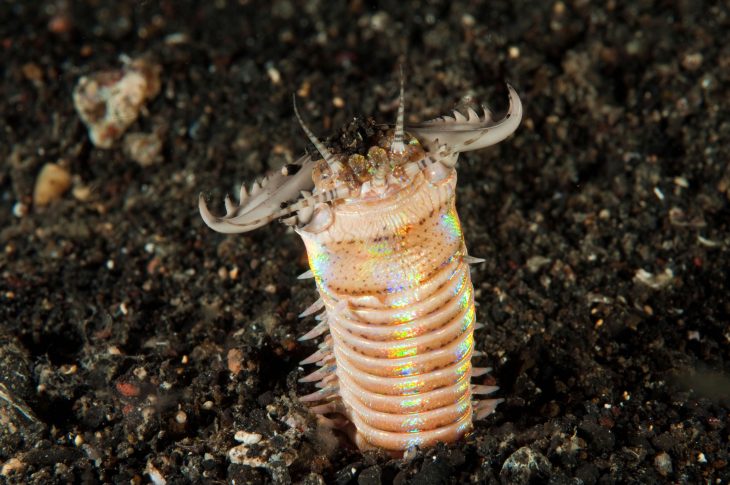
The bobbit worm is a fierce underwater predator. They have the ability to quickly strike out from the sand. Bobbit worms are blind, brainless, with spear-like teeth that can slice prey in half. Find out more about this strange creature with these 30 bobbit worm facts!
- Bobbit worms have five antennae which they use to detect prey.
- Its body measures 25.5 millimeters (1.00 in) wide.
- The bobbit worm can grow up to 10 feet long (120 inches).
- They live from three to five years.
- Bobbit worms move fast, they can retract to their burrows at around 20 feet per second.
- The bobbit worm is a bristle worm.
- It lives in the Atlantic Ocean and the other parts of the Indo-Pacific.
- Bobbit worms have a variety of colors, ranging from black to purple.
- The other name of the bobbit worm is sand striker.
- Bobbit worms belong to the Eunicidae family or segmented worms.
- They have no eyes or brain.
- The body of the Bobbit worm has an exoskeleton or external skeleton.
- The scientific name of the Bobbit worm is Eunice aphroditois.
- Bobbit worms snap their prey using their muscled mouth called the pharynx.
- They use their bristles to grip and crawl during an attack.
- Bobbit worms do not have sex organs.
- These worms have spring-like retractable jaws.
- The jaws of bobbit worms are so strong, they can cut their prey in half.
- Bobbit worms inject toxins to their prey which paralyze or kill them.
- They can capture larger fish and even eat pufferfish.
Was this page helpful?
Our commitment to delivering trustworthy and engaging content is at the heart of what we do. Each fact on our site is contributed by real users like you, bringing a wealth of diverse insights and information. To ensure the highest standards of accuracy and reliability, our dedicated editors meticulously review each submission. This process guarantees that the facts we share are not only fascinating but also credible. Trust in our commitment to quality and authenticity as you explore and learn with us.


